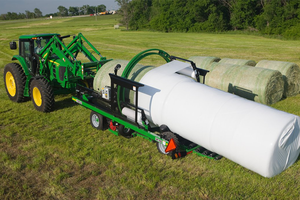Michigan State University has issued new advice for alfalfa and grass producers handling and harvesting baleage. Depending on the quality, MSU notes that baleage can be stored and fed. In addition, harvesting and storing bales now may require less drying time and smaller investments for baling.
To produce high-quality baled silage, experts claim that careful and timely management is required. Field operations will need to be coordinated to ensure that wrapped bales have consistent forage moisture.
Moisture variation can be caused by species mixture and field topography, among other factors. MSU notes that when more hay has been cut than can be baled in the 50-to-60 moisture window, health problems and inconsistent feed intake can occur.
Baling when forage moisture is too high can also result in low quality silage. On the other hand, baling when forage moisture is too low makes it more challenging to exclude oxygen, resulting in a lower quality crop. The key to high-quality baleage is striking the perfect balance.
To ensure the production of high-quality bale silage, MSU recommends wrapping at 50-to-60 percent moisture, keeping forage species consistent, and numbering and dating each bale. In addition, producers should only mow and harvest crops that can be handled in the time that it will take to try from about 50-to-60 percent moisture.
MSU’s new research on best practices for producing baled silage will be presented at the school’s Agriculture Innovation Day on August 24, 2017.
